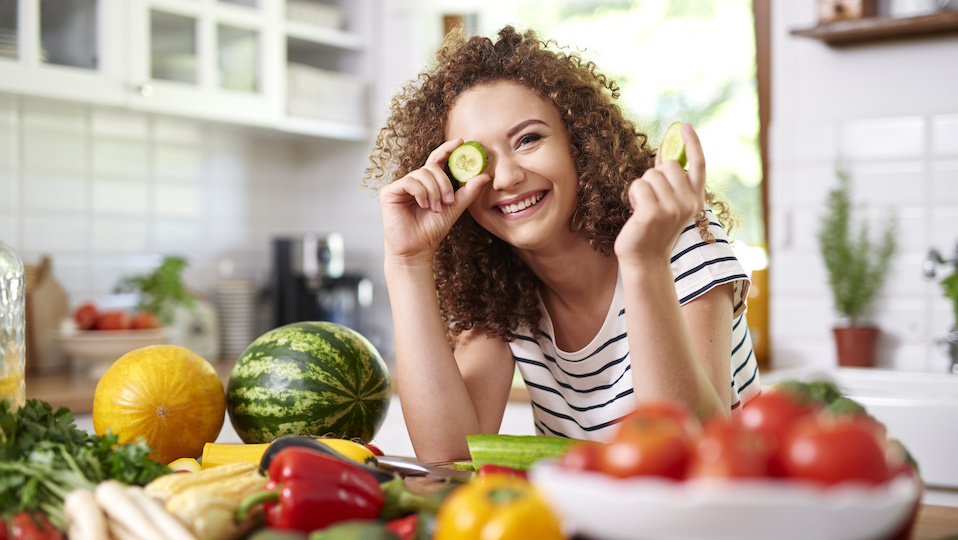Many people begin gardening to support a healthier diet. When you grow your own food, you’re more likely to make healthy meals and snacks. A vegetable garden is a solid foundation for healthy living, and there are no wrong answers when it comes to what to grow. But, if eye health is particularly important to you and your family, some vegetables have more of an impact than others.
Nutrients for Eye Health
Certain foods are rich in nutrients that maintain good eye health and reduce the risk of age-related eye conditions, like cataracts and macular degeneration, as you get older. According to research, the essential nutrients for eye health are:
- Beta carotene
- Vitamins C and E
- Lutein
- Zeaxanthin
- Omega-3 fatty acids
- Zinc
You’ll find these nutrients in a range of foods, some of which you can cultivate easily, and others less so. For instance, you may not be able to farm omega-3 fatty acid-rich salmon, but you can harvest walnuts from any trees growing on your property. Many of the vegetables in your garden also contribute significant amounts of these nutrients to your diet.
Grow These Vegetables for Eye Health
To get more of these important nutrients in your diet, eat more of the foods that contain them. By growing these in your garden, you will be more likely to incorporate them into your meals regularly.
- Broccoli. This favorite cruciferous vegetable is easy to grow. Just make sure to harvest it before it bolts and begins to produce flowers. Broccoli is rich in vitamin C and contains more than an equivalent serving of oranges. Vitamin C is essential for good blood vessel health in the eyes and may prevent cataracts. Broccoli also contains lutein, zeaxanthin, and vitamin E. Also consider growing Brussels sprouts, another cruciferous plant with a similar nutrient profile.
- Bell peppers. Also easy to grow during the warmest months of the year, bell peppers contain significant amounts of vitamins C, A, and E along with beta carotene. Eat your peppers raw, as heat breaks down some of the critical compounds for eye health. Red and orange peppers have the most beta carotene.
- Sunflower seeds. Sunflowers are fun and easy to grow. These cheerful, huge flowers produce massive seed heads at the end of the growing season. And those seeds contain significant amounts of vitamin E. Just one ounce of sunflower seeds has half of the recommended daily amount of this vitamin. Instead of leaving seed heads out for the animals to enjoy, harvest, and dry the seeds for your pantry.
- Dark, leafy greens. Greens are packed with all kinds of nutrients, not just those good for eye health. In addition to vitamins C and E, greens contain plenty of lutein and zeaxanthin. These nutrients are compounds found in the retina and protect the eyes against harmful light. Grow kale, spinach, collards, turnips, mustard, chard, and other greens and enjoy them raw in salads or cooked in soups and stews.
- Sweet potatoes. The orange color gives away the fact that sweet potatoes are packed with beta carotene. One potato also contains some vitamin E and more than half the vitamin C you need for the day. As a bonus, sweet potato greens are edible and tasty. Use them as you would spinach leaves.
- Carrots. These are the quintessential eye food, the vegetable most people think about when considering eye health. In fact, an old wives’ tale suggests carrots improve your night vision. That isn’t exactly true, but the beta carotene will protect your eyes from damage and aging. Carrots are easy to grow and easy to snack on too.
- Walnuts. If you have a walnut tree on your property, harvest and use those nuts. This is one of the best plant sources for omega-3 fatty acids. In addition to reducing the risk of age-related eye damage, omega-3 fatty acids help relieve dry eye symptoms. Walnuts contain about 2,500 milligrams of omega-3 fats per serving, comparable to a serving of cod liver oil or sardines. However, they are much tastier.
- Pumpkins. Yes, the orange color gives away beta carotene, but there is another reason to grow pumpkins for eye health. Most vegetables do not contain much zinc, an essential micronutrient for the eyes. Zinc is present in the retina and helps form visual pigments. Inadequate zinc can damage eyesight and even cause night blindness. Pumpkin seeds, on the other hand, contain about 20% of the daily recommended amount of zinc per ounce. A pumpkin is a double source of food. Use the flesh for soup and pies and enjoy the dried seeds for a healthy snack.
Other Healthy Foods for the Homestead
Your vegetable garden is an excellent source of foods that protect your eyes, but there are others you may be able to raise and use. Egg yolks, for instance, contain vitamin A, lutein, zeaxanthin, and zinc. If you raise chickens, the eggs help protect your eyes.
Dairy products also contain essential nutrients for the eyes. With dairy cows, you can produce milk, cheeses, and yogurt that are rich in zinc and vitamin A. The most nutritious dairy comes from grass-fed cows.
It’s important to understand that there is no set amount of these nutrients that should be consumed for optimal eye health. The research simply hasn’t determined this yet. But, if you grow vegetables rich in vitamins A, C, and E, in lutein and zeaxanthin, and zinc and omega-3 fats, your eyes will inevitably benefit.
-Mary Ellis



